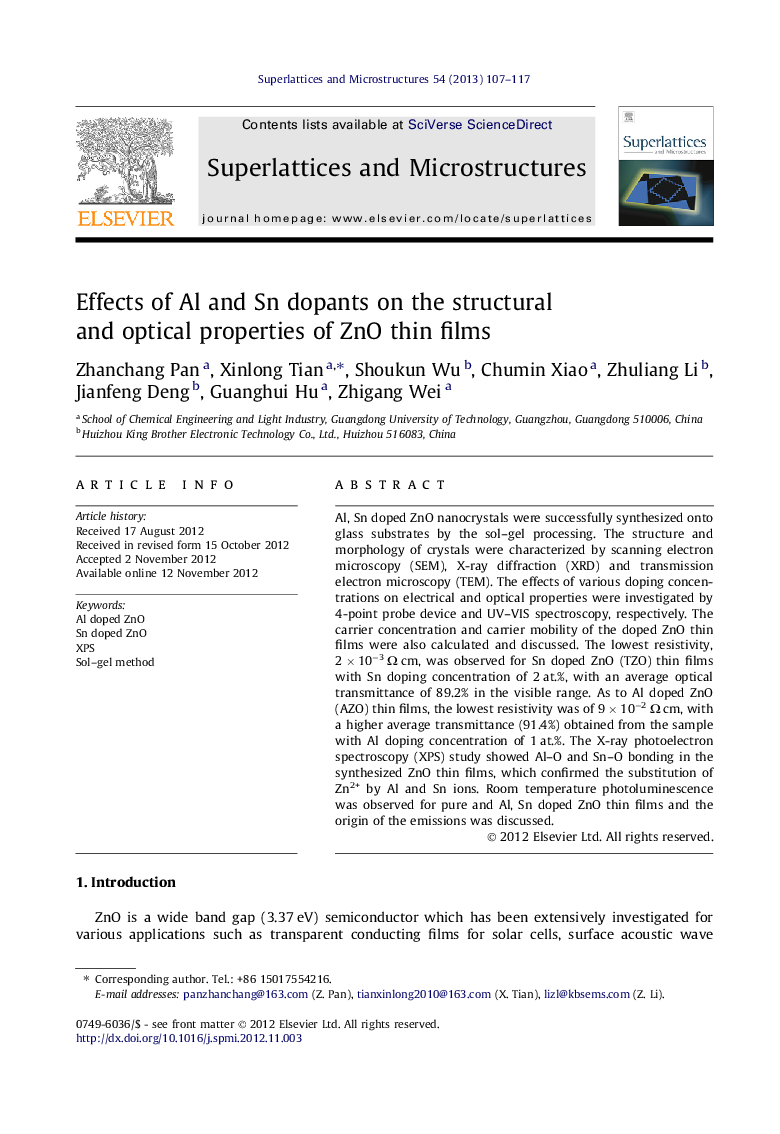| Article ID | Journal | Published Year | Pages | File Type |
|---|---|---|---|---|
| 1553750 | Superlattices and Microstructures | 2013 | 11 Pages |
Al, Sn doped ZnO nanocrystals were successfully synthesized onto glass substrates by the sol–gel processing. The structure and morphology of crystals were characterized by scanning electron microscopy (SEM), X-ray diffraction (XRD) and transmission electron microscopy (TEM). The effects of various doping concentrations on electrical and optical properties were investigated by 4-point probe device and UV–VIS spectroscopy, respectively. The carrier concentration and carrier mobility of the doped ZnO thin films were also calculated and discussed. The lowest resistivity, 2 × 10−3 Ω cm, was observed for Sn doped ZnO (TZO) thin films with Sn doping concentration of 2 at.%, with an average optical transmittance of 89.2% in the visible range. As to Al doped ZnO (AZO) thin films, the lowest resistivity was of 9 × 10−2 Ω cm, with a higher average transmittance (91.4%) obtained from the sample with Al doping concentration of 1 at.%. The X-ray photoelectron spectroscopy (XPS) study showed Al–O and Sn–O bonding in the synthesized ZnO thin films, which confirmed the substitution of Zn2+ by Al and Sn ions. Room temperature photoluminescence was observed for pure and Al, Sn doped ZnO thin films and the origin of the emissions was discussed.
► Al, Sn doped ZnO thin films were synthesized by sol–gel method. ► The effects of different doping concentrations were investigated and compared. ► 1 and 2 at.% was proved to be the optimum concentration for AZO and TZO, respectively. ► The origin of the photoluminescence emissions was discussed. ► The films showed high transmittance and low resistivity.
